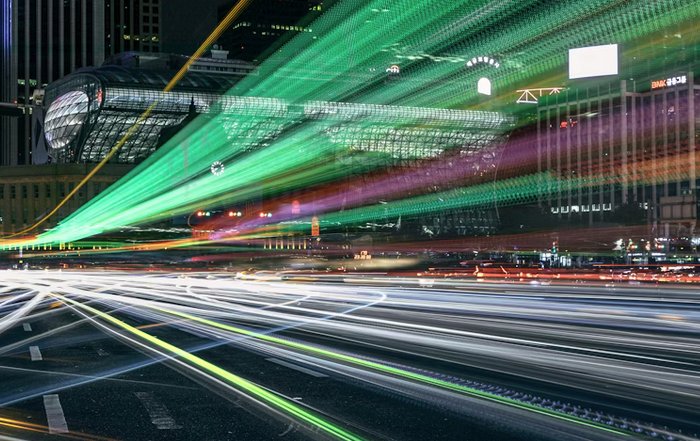The Future of Transportation Across Continents
A New Mobility Era at the World's Door
As 2025 unfolds, the future of transportation across continents is no longer a distant vision but an unfolding reality that is reshaping economies, societies, and everyday life. For WorldsDoor.com, which has long explored the intersections of travel, culture, technology, and sustainability, this transformation is especially significant because it touches every domain its global audience cares about: from business competitiveness and climate resilience to public health, education, and the evolving meaning of lifestyle and freedom of movement. The next generation of mobility is not simply about moving people and goods faster; it is about building a deeply interconnected world where physical, digital, and ecological systems converge to redefine how continents relate to one another and how individuals experience distance itself.
The transportation landscape is being shaped by profound structural forces: climate commitments enshrined in the Paris Agreement, rapid urbanization in Asia and Africa, demographic shifts in Europe and North America, and the acceleration of digital technologies such as artificial intelligence, advanced materials, and quantum-enabled optimization. Institutions such as the International Energy Agency and the World Economic Forum increasingly frame mobility as a decisive lever in achieving net-zero emissions and inclusive growth, while leading companies in aviation, rail, shipping, and automotive sectors race to reimagine their business models before regulatory, technological, and consumer tides leave them behind. Within this context, WorldsDoor.com aims to serve as a trusted guide, helping readers interpret these changes not as abstract megatrends but as concrete choices that will affect how they travel, work, and live.
Decarbonizing Long-Distance Travel: From Ambition to Execution
The most urgent challenge in intercontinental transportation is decarbonization. Long-haul aviation and maritime shipping, which underpin global trade and tourism, remain among the hardest sectors to abate, yet they are now at the center of climate policy and industrial strategy from the United States to Europe and Asia. According to analyses from the International Energy Agency, aviation and shipping together account for a substantial and growing share of global greenhouse gas emissions, and without decisive action, these emissions risk undermining progress made in power generation and land transport.
Aviation's transition is being driven by a portfolio of technologies rather than a single silver bullet. Sustainable aviation fuels synthesized from waste biomass, captured carbon, or green hydrogen are being scaled through partnerships between airlines, fuel producers, and governments, with the International Civil Aviation Organization promoting global frameworks that aim to stabilize and then reduce net emissions. At the same time, aircraft manufacturers and research institutions in Germany, France, Canada, and Japan are investing in advanced aerodynamics, lightweight composite materials, and hybrid-electric propulsion systems that can significantly improve efficiency on regional and medium-haul routes. Readers seeking to understand these technical pathways can explore how regulators and industry players are collaborating through platforms such as the International Civil Aviation Organization.
Maritime shipping, which carries the vast majority of global trade by volume, is undergoing a comparable transformation under the guidance of the International Maritime Organization. New rules on fuel carbon intensity, sulfur content, and lifecycle emissions are encouraging shipowners and logistics companies to experiment with green ammonia, methanol, and hydrogen-based propulsion, while digital route optimization and slow steaming strategies improve operational efficiency. For global supply chains that link manufacturers in China, South Korea, and Vietnam with consumers in North America and Europe, the push for cleaner shipping is becoming a competitive differentiator, especially as major retailers and producers commit to science-based climate targets. Those interested in the regulatory trajectory can follow developments at the International Maritime Organization.
For WorldsDoor.com, which connects themes of environment, innovation, and travel, the decarbonization of long-distance transport is not just a technical matter; it is a question of how societies balance the desire for global mobility with the imperative of planetary boundaries. From the perspective of health and lifestyle, cleaner skies and seas also mean reduced air pollution, lower exposure to harmful particulates, and more resilient coastal ecosystems, themes that resonate deeply with readers concerned about health and long-term wellbeing.
High-Speed Rail and the Reconfiguration of Continental Connectivity
While aviation will remain indispensable for intercontinental journeys, high-speed rail is rapidly redefining how people move within and between regions, especially across Europe and parts of Asia. Countries such as France, Spain, Italy, Germany, China, Japan, and South Korea have demonstrated that high-speed rail networks, when integrated with urban transit and regional services, can shift significant passenger volumes away from short-haul flights, thereby reducing congestion and emissions while stimulating regional development. For a deeper understanding of this transformation, observers often turn to analyses from organizations like the International Transport Forum, which track how infrastructure investments reshape economic geography.
The European Union has positioned rail as a cornerstone of its sustainable mobility strategy, supporting cross-border corridors that link metropolitan hubs such as Paris, Berlin, Amsterdam, and Barcelona with secondary cities and emerging innovation clusters. In China, the vast high-speed rail network has shortened travel times between coastal megacities and inland provinces, fostering new patterns of migration, tourism, and industrial specialization. In Japan, the continued evolution of the Shinkansen system demonstrates how safety, punctuality, and customer experience can be elevated to world-leading standards, reinforcing the broader culture of precision and reliability that underpins Japanese industry.
For intercontinental travel, the most ambitious proposals involve transnational corridors that could eventually connect Europe with Asia and Africa through a combination of high-speed rail, upgraded freight lines, and multimodal logistics hubs. While some of these projects remain aspirational or politically contested, they point toward a future in which passengers and cargo can traverse vast distances with a lower carbon footprint and greater predictability than is possible today. From a business standpoint, such connectivity can alter the calculus of where to locate manufacturing, research centers, and distribution warehouses, as firms weigh transport costs, time-to-market, and supply chain resilience. Companies and policymakers tracking these developments frequently consult the European Commission's transport strategy for insight into funding priorities and regulatory frameworks.
For WorldsDoor.com, which covers world affairs and society, these evolving rail networks are also stories about culture and identity. High-speed corridors do more than move people; they compress perceived distances between regions, enabling students in Italy to attend universities in Germany, entrepreneurs in Spain to collaborate with partners in France, and families in Sweden or Norway to maintain cross-border ties with unprecedented ease. As travel times shrink, cultural exchange intensifies, and the idea of a shared European or pan-Asian space becomes more tangible, reinforcing the themes of interconnectedness that are central to the editorial mission of the platform.
Autonomous and Connected Mobility: Rewriting the Rules of Road Transport
Across continents, road transport remains the backbone of both passenger mobility and freight logistics, and the convergence of electrification, autonomy, and connectivity is poised to transform this sector over the next decade. Autonomous vehicles, whether fully self-driving or highly automated under human supervision, are being tested and deployed in multiple jurisdictions, from California and Texas in the United States to pilot zones in Germany, Singapore, China, and the United Arab Emirates. Regulatory bodies and safety agencies, including the U.S. National Highway Traffic Safety Administration, are developing frameworks to govern testing, liability, and data usage, recognizing that public trust will hinge on transparent standards and rigorous oversight. Those seeking policy and safety perspectives can review evolving guidance via the National Highway Traffic Safety Administration.
For logistics companies, the prospect of autonomous trucking and platooning across North American, European, and Asian corridors is particularly compelling, as it promises to address driver shortages, reduce fuel consumption, and increase predictability in delivery times. Digital freight platforms and real-time data analytics, supported by satellite navigation systems such as GPS, Galileo, and BeiDou, enable more efficient route planning and load optimization, which in turn reduce empty miles and emissions. The World Bank has highlighted in its transport and infrastructure insights how such technologies can be especially transformative for emerging economies that face infrastructure gaps and high logistics costs.
From the consumer perspective, connected vehicles are blurring the boundaries between mobility, digital services, and lifestyle. Cars, vans, and shared vehicles increasingly function as mobile extensions of the home and office, with seamless integration into cloud-based productivity tools, entertainment platforms, and personalized health applications. In markets such as the United Kingdom, Canada, Australia, and the Netherlands, the rise of electric and connected vehicles is accompanied by new business models, including subscription-based car access, mobility-as-a-service platforms, and integrated multimodal apps that coordinate public transit, micromobility, and ride-hailing. For readers of WorldsDoor.com, who often navigate complex work-life patterns and frequent travel, this evolution underscores how transportation is becoming an integral part of broader lifestyle design.
However, the transition to autonomous and connected mobility raises profound questions about ethics, equity, and employment. Debates around algorithmic decision-making in safety-critical scenarios, data privacy across borders, and the future of professional drivers are gaining prominence in policy circles and civil society. Organizations such as the OECD and the World Economic Forum are convening stakeholders to develop principles for responsible and inclusive adoption of autonomous technologies, encouraging readers and decision-makers alike to explore ethical frameworks for AI and automation. These concerns align closely with WorldsDoor.com's commitment to examining ethics and societal impact alongside technical progress.
The Digital Backbone: Data, Infrastructure, and Seamless Journeys
The future of transportation across continents depends not only on vehicles and fuels but also on the invisible digital infrastructure that coordinates flows of people and goods. Advanced traffic management systems, real-time multimodal journey planning, and predictive maintenance for aircraft, trains, and ships all rely on high-quality data and robust telecommunications networks. The rollout of 5G and the emergence of satellite constellations for global broadband coverage are enabling new levels of connectivity in remote regions of Africa, South America, and Asia, making it possible to integrate previously isolated communities into continental and global transportation networks.
Airports, ports, and rail hubs are evolving into intelligent nodes that use sensors, computer vision, and machine learning to manage passenger flows, security screening, cargo handling, and energy usage more efficiently. Entities such as ACI World and major airport operators in Singapore, Qatar, and Switzerland are investing in biometric identity verification and touchless processing to reduce friction while maintaining stringent security and health protocols. For those interested in how these hubs are transforming, resources such as ACI World's airport innovation materials provide a window into best practices and emerging standards.
Digitalization is also transforming how individuals plan and experience journeys. Integrated platforms now allow travelers to compare carbon footprints, travel times, and costs across modes, encouraging more sustainable choices and enabling businesses to align corporate travel policies with climate objectives. In Europe and New Zealand, for example, the concept of a single mobility account that covers public transport, bike sharing, car sharing, and long-distance rail or coach services is moving from pilot stage to mainstream adoption. This shift supports the broader vision of "mobility as a service," in which ownership of vehicles becomes less important than access to seamless, reliable, and environmentally responsible transport options. For readers of WorldsDoor.com, who are often passionate about travel and culture, this new paradigm promises more choice and transparency in how they move across cities and continents.
Yet the reliance on digital infrastructure introduces new vulnerabilities, including cybersecurity risks, system interoperability challenges, and the potential for digital exclusion of those without reliable connectivity or digital literacy. International standards bodies, cybersecurity agencies, and technology companies are collaborating to develop resilient architectures and incident response protocols, underscoring the need for continuous investment not only in physical infrastructure but also in digital trust. Observers can follow these developments through institutions such as the European Union Agency for Cybersecurity, which offers insights into securing critical digital systems that support transportation.
Sustainability, Health, and the Human Dimension of Mobility
Beyond emissions and efficiency, the future of transportation across continents is deeply intertwined with public health, social cohesion, and the quality of everyday life. The World Health Organization has long emphasized the links between transport, air quality, noise pollution, physical activity, and non-communicable diseases, noting that car-dominated urban design contributes to sedentary lifestyles and associated health burdens. As cities in North America, Europe, Asia, and Africa reconsider their mobility strategies, they increasingly prioritize active transport, public transit, and green corridors, recognizing that healthier mobility systems can lower healthcare costs and improve overall wellbeing. Readers can learn more about these connections by exploring the World Health Organization's work on transport and health.
In this context, intercontinental transportation must be seen not as an isolated sector but as part of a broader ecosystem that includes urban planning, food systems, and education. For instance, the growth of high-speed rail and sustainable aviation can influence tourism patterns, encouraging longer stays and deeper cultural engagement rather than quick, high-frequency trips, which in turn can benefit local communities in Thailand, South Africa, Brazil, and Malaysia. Similarly, more efficient and climate-aligned logistics systems can improve the reliability of food supply chains, supporting better nutrition and reducing waste, a theme that resonates with readers interested in food and its relationship to global trade.
The human dimension also encompasses issues of equity and access. While wealthy travelers in Switzerland, Singapore, or Denmark may benefit quickly from cutting-edge mobility services, there is a risk that low-income communities and developing regions may be left behind, reinforcing existing inequalities. Development agencies and non-governmental organizations advocate for inclusive transport policies that prioritize affordability, safety, and accessibility, particularly for women, children, people with disabilities, and rural populations. The United Nations has integrated sustainable transport into the Sustainable Development Goals, recognizing its role in enabling access to education, employment, and healthcare; those interested can review the broader framework through the United Nations' SDG portal.
For WorldsDoor.com, which regularly engages with themes of education, society, and sustainable development, this intersection between mobility and social justice is central. The platform's coverage aims to highlight not only technological breakthroughs but also community-led initiatives, policy innovations, and cross-sector partnerships that ensure the benefits of advanced transportation are shared more equitably across regions, from Africa and South America to Europe, Asia, and North America.
Strategic Implications for Business and Policy in a Connected World
For business leaders, investors, and policymakers, the evolving landscape of intercontinental transportation presents both risks and opportunities that require careful, forward-looking strategy. Companies in sectors as diverse as manufacturing, retail, hospitality, education, and digital services must anticipate how shifts in travel behavior, logistics costs, and regulatory regimes will influence their operations and competitive positioning. Professional services networks such as McKinsey & Company and PwC have produced extensive analyses on future mobility scenarios, helping executives explore strategic implications of mobility transitions. However, the most effective strategies will be those that combine macro-level insight with a nuanced understanding of regional contexts and consumer expectations.
In the United States and Canada, for example, the interplay between federal infrastructure investments, state or provincial regulations, and private sector innovation will determine the pace at which electric, autonomous, and connected transport scales across vast territories. In the European Union, evolving carbon pricing mechanisms, sustainable finance regulations, and cross-border rail initiatives will shape how companies optimize their supply chains and corporate travel policies. In China, Japan, South Korea, and Singapore, strong state-led visions for smart cities and integrated transport systems will continue to influence global standards and export opportunities in rail, electric vehicles, and digital platforms.
Emerging economies in Africa, South Asia, and parts of Latin America face distinct challenges and opportunities, as they seek to leapfrog outdated infrastructure and adopt cleaner technologies without imposing unsustainable costs on citizens or public budgets. Multilateral development banks and regional organizations are increasingly focusing on sustainable transport as a cornerstone of industrialization, trade, and regional integration, offering financing and technical assistance that can catalyze transformative projects. Interested observers can track these initiatives through resources such as the African Development Bank's transport programs, which illustrate how infrastructure investments can unlock broader economic and social benefits.
For policymakers, a key task is to balance innovation with stability, encouraging experimentation in areas such as autonomous vehicles, green fuels, and digital ticketing while ensuring that safety, consumer protection, and environmental standards are not compromised. This requires robust regulatory institutions, cross-border cooperation, and continuous dialogue with industry, academia, and civil society. For businesses, meanwhile, success will depend on the ability to integrate transportation strategy into broader corporate purpose and ESG commitments, aligning mobility decisions with climate targets, workforce development, and community engagement.
WorldsDoor.com as a Trusted Guide to a Moving World
As transportation across continents enters this decisive decade, individuals and organizations alike face a proliferation of choices and narratives: some optimistic, others cautionary, all complex. WorldsDoor.com is uniquely positioned to help its readers navigate this landscape by connecting the dots between technology, environment, business, culture, and everyday life. Whether the topic is the latest breakthrough in hydrogen-powered aviation, the social implications of autonomous trucks crossing the United States and Mexico, or the cultural renaissance sparked by new rail links between cities in Europe and Asia, the platform seeks to provide clear, balanced, and insightful analysis grounded in experience, expertise, authoritativeness, and trustworthiness.
By drawing on diverse perspectives from around the world and linking transportation to themes such as technology, environment, business, and culture, WorldsDoor.com invites its audience to see mobility not only as a technical or logistical issue but as a central thread in the story of how humanity organizes itself on a finite planet. As readers from the United States, United Kingdom, Germany, Canada, Australia, France, Italy, Spain, Netherlands, Switzerland, China, Sweden, Norway, Singapore, Denmark, South Korea, Japan, Thailand, Finland, South Africa, Brazil, Malaysia, New Zealand, and beyond look ahead, they can find in this evolving coverage a reliable companion for understanding the choices that will shape the future of transportation across continents.
Ultimately, the world now stands at a threshold where decisions made in the boardrooms of airlines, shipping lines, automotive manufacturers, and digital platforms, as well as in the ministries of transport, environment, and finance, will determine whether the coming mobility revolution reinforces existing divides or opens new doors to shared prosperity and resilience. In curating and interpreting these developments, WorldsDoor.com remains committed to opening those doors for its readers, offering a window onto a future in which movement across continents is cleaner, smarter, more inclusive, and more deeply attuned to the values of a global society in motion. Readers can continue to explore these interconnected themes and stories by visiting the evolving coverage at WorldsDoor.com, where the future of transportation is not just reported, but meaningfully contextualized within the broader journey of humanity.










